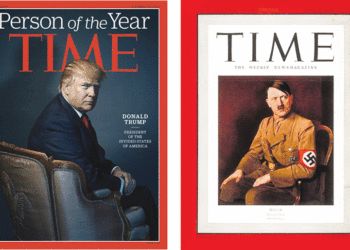“Jewish law prefers that Jews pray communally rather than privately,” writes Rabbi Joseph Telushkin in Jewish Literacy. “For one thing, the rabbis apparently felt that public prayers are apt to be offered for that which benefits the entire community, whereas individuals often pray for that which benefits only themselves, even if it be at the expense of someone else. For example, a person who has applied for a job may pray to God that he or she gets it, although others have applied for the same position and presumably want it just as much. Because communal prayers are by, and on behalf of, large numbers of people, they tend to be more concerned with the public good.”
Telushkin is writing about the minyan, the traditional Jewish prayer group formed by 10 adult males. A minyan is needed in order to recite many of the important prayers, including the Barchu and Kaddish, and to read the Torah.
In 1973, the Conservative movement ruled that women could be counted in a minyan, according to Telushkin: “The movement regarded the exclusion of women from the pray quorum as discriminatory. The Orthodox leadership denounced this ruling as a violation of Jewish law.”
In a departure from local Jewish tradition, Temple of Aaron Synagogue recently announced that it would no longer host a morning minyan on weekdays. This was first announced in a December letter to congregants from the synagogue president, Judy Werthauser; on Jan. 10, Rabbi Alan Shavit-Lonstein sent a letter explaining more about “some modifications to the timing and location of prayer services at the synagogue.”
The big news is that Temple of Aaron will be working with Beth Jacob Congregation, located in Mendota Heights, “to finalize the creation of an East Metro Minyan, involving both congregations.”
Basically, Beth Jacob will host a weekday morning minyan at 7:15 a.m., and Temple of Aaron will hold mincha/maariv services at 6 p.m. on weekdays. (Apparently, Beth Jacob also will conduct evening services on Mondays and Thursdays.) This new collaboration “will build a stronger connection between St. Paul Conservative synagogues to pray and say Kaddish together,” writes Rabbi Shavit-Lonstein. “Please note that neither synagogue has evening minyanim on Saturday or Sunday.”
This latter item posed a problem for me last Saturday, the second yahrzeit for my mother, Anna Waller Specktor. I davened and said Kaddish at Beth El Synagogue on Saturday and Sunday evenings. On Sunday morning I went to the minyan at Temple of Aaron, which had about 25 people in attendance. (The Men’s Club sponsors a brunch after services, with bagels and lox, so that is kind of a draw. For me, I view a bottle of single malt whiskey at the kiddush with favor.)
I should mention that Temple of Aaron is also changing up Friday night services, which usually were held at 8 p.m. This year, there will be three 6 p.m. services each month, and an 8 p.m. service once a month. The 8 p.m. service will be preceded by a dinner for members at 6:30 p.m.
In his letter, when discussing the focus on one minyan a day, Rabbi Shavit-Lonstein acknowledges “the frustration that many minyan regulars have described when they attend with only a few others, and are not able to have a complete service or read from the Torah.”
“It didn’t catch me as a complete surprise,” said Rabbi Hayim Herring, regarding the changes in minyanim on the Conservative east side of the river. “In some ways there are positives to this in that, I think, collaboration within denominational lines, across denominational lines, is a really good thing for the Jewish community.”
Rabbi Herring is a former pulpit rabbi at Beth El, served as assistant director of the Minneapolis Jewish Federation, and was the executive director of STAR (Synagogues: Transformation and Renewal). He knows from trends in Jewish movements, so I called last week for his thoughts on the formation of the East Metro Minyan.
The decline in Conservative synagogue membership “is a well-known fact,” according to Hering; he noted that the “beginning of a trend line downward was already evident” in the 1990 National Jewish Population Survey (NJPS).
“The latest Pew study on religion in America showed that the largest (and I’m going to put this in quotes) ‘denomination,’ the fastest-growing affiliation was ‘nones’… no denominational affiliation.”
I looked this up: the Pew Forum on Religion and Public Life survey found that among those 18 to 29 years old, 25 percent were not affiliated with any religious denomination, whether Christian, Jewish, Muslim, etc.
Rabbi Herring said that we tend to forget that Jews are “like a microcosm of some larger trends.” And he pointed out that “it’s not a trend, it’s a reality now that people sort of gravitate more toward spirituality, less organized, more informal religious experiences,” rather than more formal religious experiences, like minyanim.”
In short, the changes we see in the St. Paul area Conservative shuls, regarding the merging of minyanim, are a “logical development,” according to Herring.
I don’t have any prescriptions here, although the American Jewish World would like to see the organized Jewish community innovate, grow and prosper. As a nonreligious Jew, I am perplexed about where to go say Kaddish when my synagogue is shuttered on a Saturday afternoon. The Orthodox shuls are still open for business, I guess.
I suppose that the situation is kind of like what Pogo found many years ago: “We have met the enemy and he is us.”
— Mordecai Specktor / editor@ajwnews.com
(American Jewish World, 2.1.13)



















Adath Jeshurun and Beth El Congregations have vibrant egalitarian minyanim at our synagogues, morning and evening every day including Saturday and Sunday. All are welcome to attend.